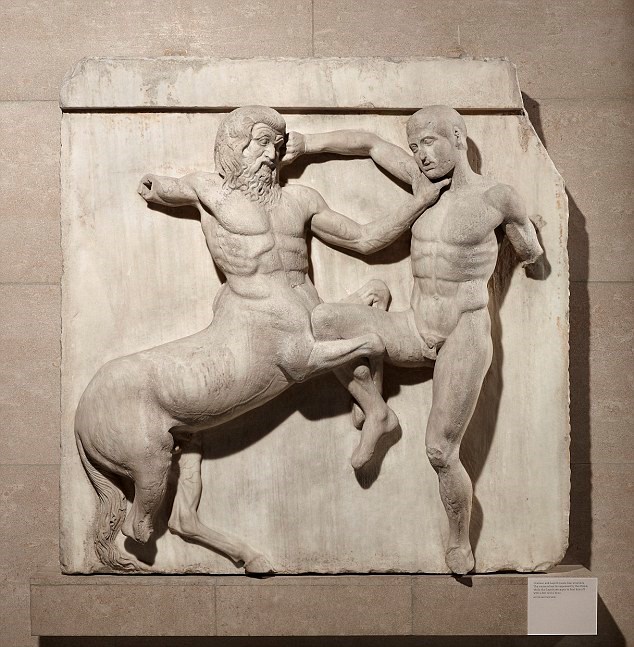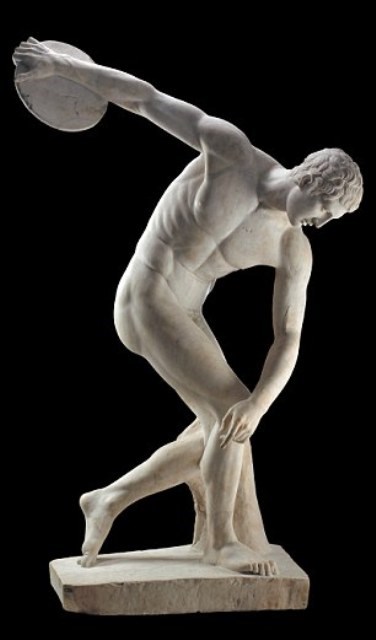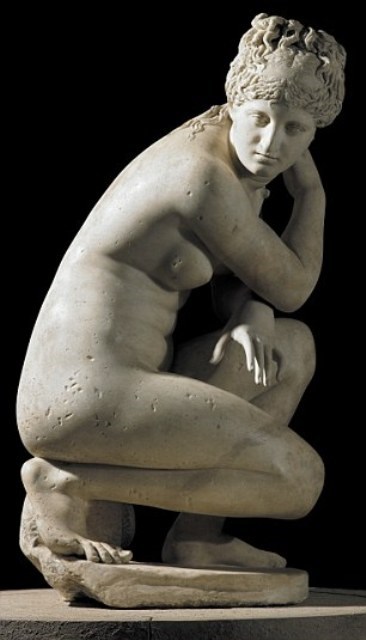We often see Greek statues displayed in many museums around the world in a state of nudity.
The ancient Greeks have long been renowned for creating and popularizing modern concepts of the human body. Prominent among these is the idea and philosophy of beauty expressed through nude statues of individuals or deities.
About 2,500 years ago, a cultural revolution took place in Ancient Greece. Democracy emerged in the capital city of Athens, many masterpieces of tragedy and comedy appeared, and the statues here were sculpted to resemble real life more than ever before.

However, what is remarkable is that these new statues are all in a state of nudity. From the warriors who perished in the Trojan War to athletes throwing the discus or goddesses stepping into a bath.

The famous statue of Discobolus depicting a man throwing the discus in a state of nudity
Today, we consider nude Greek statues to be a given. However, at the time these statues were created, the Athenians broke a significant taboo.
Artworks from earlier civilizations also featured nude figures, such as a carved stone dating back to 730 BC, found in Nimrud of the ancient Assyrian kingdom (modern-day Iraq).
However, on the stone from Nimrud (now displayed in the British Museum), the nude figures are enemies of Assyria. Some of them are depicted without any clothing and decapitated. The victorious Assyrians are fully clothed.
There is a fundamental difference in the civilizations that existed before the Greek civilization. For them, nudity represented weakness, defeat, or shame. In contrast, Greece was the first country to regard nudity as a symbol of heroism. This is why the figures chosen for depiction were often gods, athletes, or prominent individuals with social status. This concept plays an important role and explains why this art form in Greece remains popular without becoming vulgar.
Neil MacGregor, the director of the British Museum, stated: “The Greeks did not see nude images as a sign of shame but as a symbol of virtue for the elite men in society. When a young man stripped naked to compete in the ancient Olympic Games, he was not merely naked before his opponents but was donning the uniform of integrity.”
Additionally, small details used to adorn the human body, such as pieces of clothing, jewelry, tattoos, and other decorations, were done relatively “sparingly,” as sculpting a person or deity in the nude was considered to express the true value of the character.
Nevertheless, the ancient Greeks did not always favor nudity, such as in gymnasiums or during meals. However, the term Gym—meaning gymnasium—originates from the Greek word “gymnasium,” which means “naked.”
An ancient vase dating back to 530 BC from Athens depicts four athletes, including a long jumper, two javelin throwers, and a discus thrower, all in a state of nudity.
All the athletes covered their bodies with a mixture of olive oil and dust, which served as a form of sunscreen to protect against the glaring Mediterranean sun while training outdoors.
Around the 4th century BC, the goddess Aphrodite was often sculpted in the nude, but with part of her body concealed yet exuding allure.
Other alluring female statues were also often carved wearing thin, tight, or wet clothing clinging to their bodies.

Statue of Goddess Aphrodite.
To this day, experts still do not fully understand why athletes in the ancient Olympics competed nude.
Some suggest this originated from an unusual event where an athlete won the 200-meter race after losing his shorts, and other competitors quickly followed suit.
Others believe that nudity reflects an ancient ritual marking the transition into adulthood, when individuals shed their childhood garments at the age of 20. At that point, they would run naked, blending into the crowd of adult citizens.
In Athens, there was also an annual nude festival to honor the city’s patron goddess—Athena.
Young Athenians would run straight from the gym outside the city to the Parthenon—the temple of the goddess Athena.
The plump men, who ran slower, would receive loud cheers from the crowd as they passed by.
Although this represented an unprecedented openness about nudity and sexuality, the Greeks did not appreciate losing control over “the act” or being openly aroused—something they considered a sign of weakness. That is why classical statues are often carved with modest genitalia, even for Hercules.


















































